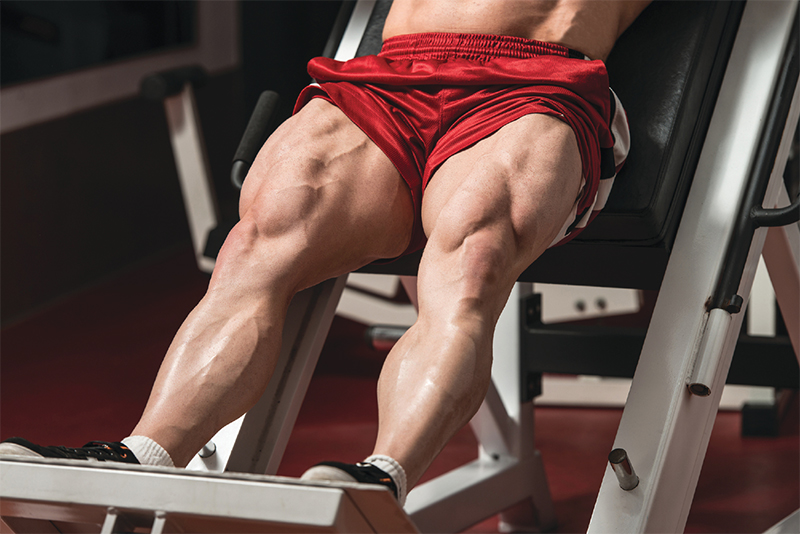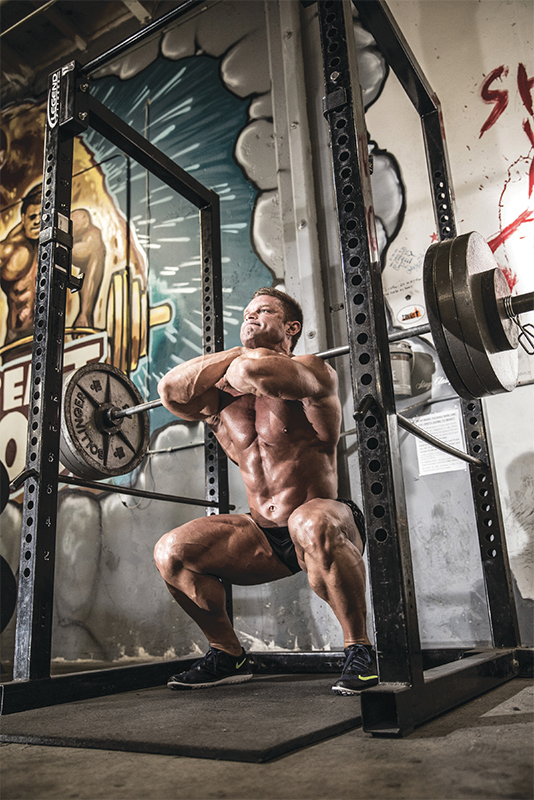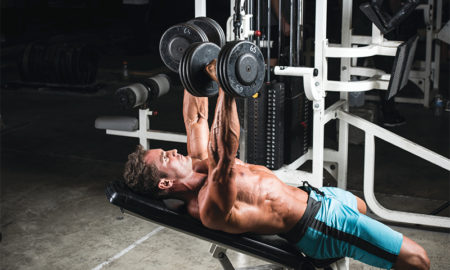

Squat your way to greater strength, flexibility, and improved gym performance.
By Heather Neff, CPT
Compound moves have never been more in. In spite of that, some people know relatively squat about the front squat. That ends here. The front squat is a great exercise to add to your workouts because it works so many muscles at once and helps keep your body balanced, strong, and in tune. In fact, front squats offer so many benefits that you’ll even notice improvement in other exercises you perform.
Basically, the front squat is a variation of the barbell back squat. It’s like performing a regular squat, except that you’ll be holding a weighted bar and sinking as low into your squat as possible, much like you do with a goblet squat. The difference between doing a front squat and a barbell back squat is that you’re changing the center of gravity and incorporating more of your core muscles, especially your abs, as well as working a bit more on the fronts of your legs.
The Correct Form
Even though front squats are considered a safe and effective exercise, performing them incorrectly and with bad form can most definitely cause pain and injury. Always start with a comfortable amount of weight that will allow you to do six to eight reps or more depending on your goal. If you find that you are unable to maintain your form while performing the front squat, then the weight you’re using is too heavy and you need to lighten the bar a bit. Pay attention to your body. If you feel pain in any area (other than the awesome burning pain of your muscles working), stop and assess the situation.
To begin performing front squats, set the bar on the rack according to your height. Move your arms under the bar and grasp it with your hands in a racked position. The bar should be resting at the front of your deltoids and above your collarbone.
Lift the bar off of the rack by straightening out your legs and lengthening your torso. Step back from the rack and place your feet shoulder-width distance apart with your toes pointed slightly outward. Keep your head up and facing forward to maintain balance, then slowly lower yourself by pushing your hips back and bending your knees to get into a deep squat position. Your quads should reach below parallel to the floor. As you come to the bottom of your squat, exhale and push off the floor with your heels and the middle of your feet to return to standing position.
Make sure that you keep your back straight throughout the exercise. Don’t round or arch your back as this could cause pain and injury. Always face forward. Don’t look up or down as you are squatting as this can throw you off balance and prompt you to fall. Be sure to go as deep into the squat as you can for best results and to prevent knee injuries.
If you feel that your balance is off, you can place a small wedge or block under your heels as you are performing the front squat. And, it goes without saying: breathe through this exercise. Take a deep breath at the beginning of your squat and exhale as you come up. Always exhale during the hardest part of any exercise as this prevents a spike in your blood pressure, which is something you don’t want as it can lead to dizziness and make for a dangerous outcome.
Other Squats
Of course, there’s more than one way to squat, which is obviously great news for anyone looking to enhance his glutes and quads, not to mention increase core strength, balance, and stability. If you are only performing one type of squat during your training routine, you might want to reconsider. For example, if you’re only performing back squats, in the long run it could offset your muscle balance from front to back. However, alternating them in the same day with front squats will bring more balance to your body and routine.
Pistol Squats
Think you’re a tough guy? Great! Then these are just the type of squats you’ll want to do. They require you to squat one leg at a time while your other leg is extended out in front of you never touching the floor. You’ll be working on your balance and burning out your quad muscles at the same time.
Start with your feet hip-width apart and then raise your right leg until it’s parallel to the ground. Your leg should be as straight as you can get it. If you can’t leave your leg
hovering and feel cramping in your hips, grab your foot with both hands and hold it there out front. Push your hips back and bend the knee of your left leg until your thigh is parallel to the floor. Hold for a second, then push off the floor with your heel and come back up to standing. Then switch to the other side. If you’re the tough guy you claim to be, and you have all of these things mastered, try doing them while holding a couple of dumbbells extended above your head.
Goblet Squats
This type of squat can be done with either a single dumbbell, or even a kettlebell held just in front of your chest. Goblet squats are an excellent way to not only build up a ton of muscle, but with the deeper engagement of the squat, you’ll also be increasing mobility in your hip flexors and knees.
Stand with your feet shoulder-width apart and your toes slightly pointed outward. Hold a dumbbell with both of your hands right in front of your chest. Move your hips way back and sink down into your squat. You’re going to go beyond the normal depth of an average squat to where your thighs are at about 90 degrees. Push off with your heels and return to the starting position.
Jump Squats
Talk about some burning quads, jump squats might start a small fire in your workout shorts if you do them too long. Any type of plyometric exercise is very beneficial, not only for building muscle, but for burning a load of calories as well.
Stand with your feet a little wider than hip-width apart and your toes facing forward. Clasp your hands together just in front of your chest and engage your abs. Push your hips back, bend your knees, and lower into a squat position, then explode upward as you throw your hands down by your sides. As you land on your feet lightly, you’re going to immediately go back into the squat position with no pausing and repeat in a smooth sequence.

Front Squat
Adding Front Squats To Your Routine
Front squats are a great addition to pile onto leg day. They should be included at least three days a week to get the most benefits out of them. You’ll want to perform at least three sets of front squats each time and be sure you’re doing them before the lighter leg exercises so that you aren’t burned out and weakened by the time you get to them. Don’t forget to warm up with a few bodyweight squats before performing the following leg day routine.
EXERCISE SETS REPS
Barbell Back Squat 3 4-6
Front Squat 3 4-6
Bulgarian Split Squat 3 8-10
Hip Thruster 3 8-10
Leg Press 3 8-10
Standing Calf Raise 3 8-10
After performing front squats, always be sure to get in some good stretching. Why? Not only will it assist you with muscle growth, but it’s also going to benefit your flexibility and ability in performing other exercises with full range of motion.






















You must be logged in to post a comment Login